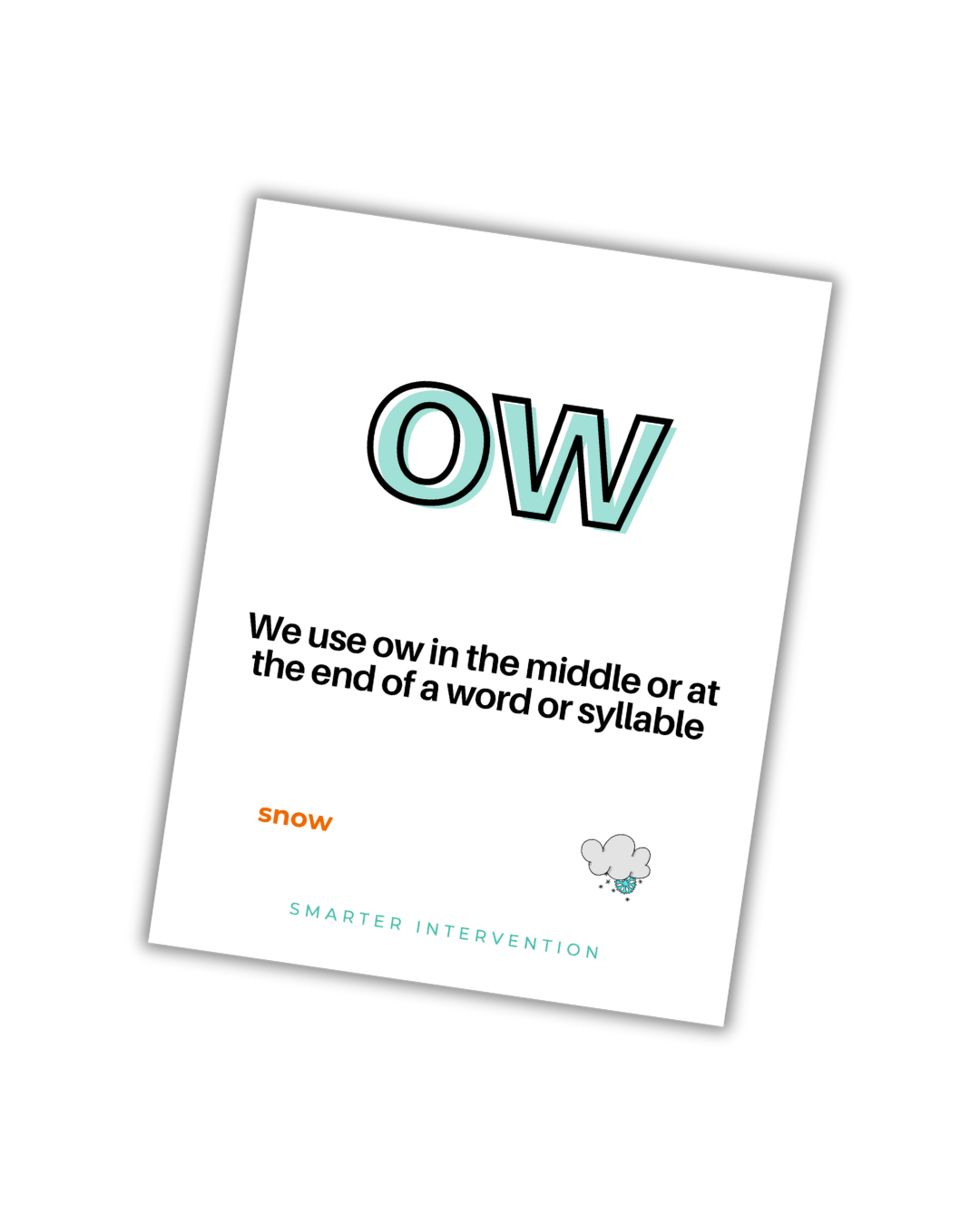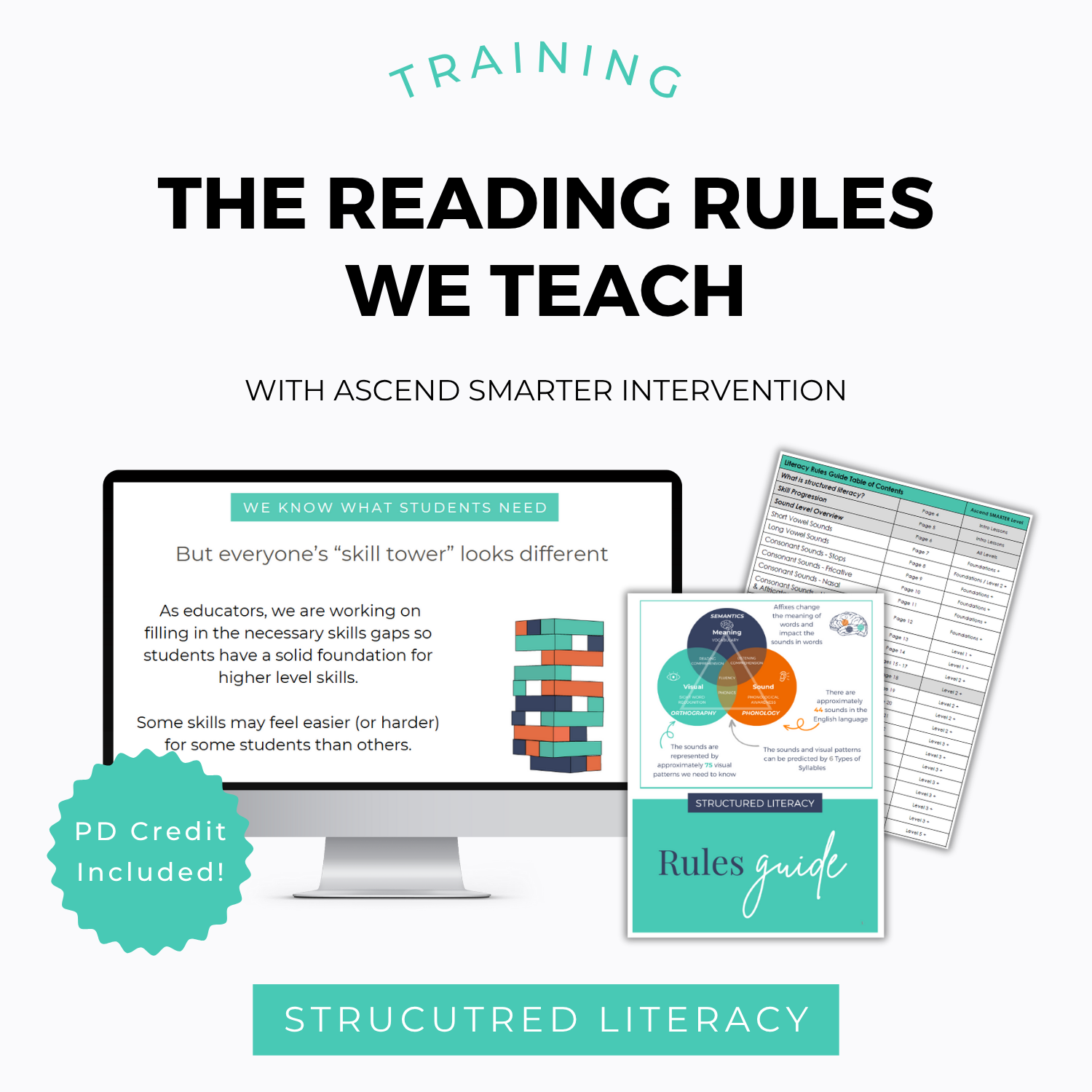How to Teach the OW Spelling Rule
The vowel team OW can be a tricky one, hidden in two very different sounds. Students often default to one pronunciation and get tripped up when it shifts. Teaching the OW rule systematically (sound, spelling, structure) turns confusion into clarity. Knowing why OW changes helps students decode and spell with confidence.
What Is the OW Rule?
OW represents two sounds:
A long O sound as in snow
A diphthong /ow/ as in plow
We anchor this with the key phrase:
“Snow – Plow” ❄️🚜
Long O = snow; Diphthong = plow. This visual hook helps students recall right away.
How We Teach the OW Spelling Pattern
We follow a deliberate progression from sound to structured writing
1. Teach the Sound in Isolation
Introduce both OW sounds explicitly. Use anchor words:
OW as in “snow” — long O
OW as in “plow” — diphthong /ow/
Have students listen, say the words, and notice the sound differences. A strong multisensory approach (visuals and movement) reinforces understanding.
2. Connect to Syllable Structure & Spelling Options
Explain that OW is a vowel team that can take two different sounds depending on the word. While there’s no strict syllable-position rule like middle vs. end, highlighting common usage and sound helps. This is especially true when noting that the long O (as in snow) is actually more common, even though students often recognize /ow/ first.
3. Practice at the Word Level
Use segmented word lists:
First, words with the long O sound: snow, grow, etc.
Then, words with the /ow/ diphthong: plow, cow, etc.
Finally, combine both lists: This gradual exposure helps students differentiate between the two.
4. Practice at the Sentence Level
Structure meaningful activities:
Sentence Building: “The snow will glow under the lights.” / “The cow will plow the field.”
Sentence Dictation: Teachers say mixed OW sentences; students write them.
Sentence Combining: Merge two OW sentences for rich context.
This shift from isolated words to connected writing reinforces spelling through authentic use.
5. Extend to Paragraph Writing
Once students show confidence, invite them to write a short paragraph using both OW sounds, maybe a mini winter scene with snow and a plowing farmer. This creative application cements learning and reveals any lingering confusion.
What If Students Get Stuck?
Common challenges include:
Always defaulting to one OW sound, regardless of word context
Misreading long O words as diphthongs, or vice versa
To support students:
Lean on the “Snow – Plow” ❄️🚜 anchor for quick recall
Use segmented lists and multisensory supports
Encourage deliberate comparison (“Does it sound like snow or plow?”)
Frequent exposure through both reading and writing builds familiarity over time
Looking to teach ow in your lessons?
Depending on where you are in your teaching journey, here are a few next steps:
Just getting started?
Grab our Free Phonics Rules Posters! They’re perfect for hanging in your classroom or using as a quick reference when introducing a new pattern (not only will you get the ow pattern, but tons of other patterns we teach too!).
Download Phonics Rules Posters » Get them here!
Want to see how we teach all the rules?
Check out our Spotlight PD: The Reading Rules We Teach (and Why They Matter!)
This 1-hour on-demand training provides you with everything you need to help you confidently teach the rules that actually move the needle, without getting lost in all the complexity.
You’ll get a clear, research-backed framework that shows which reading rules to focus on, why they matter for the brain, and how to teach them at each level—sound, syllable, word, sentence, paragraph, and passage.




